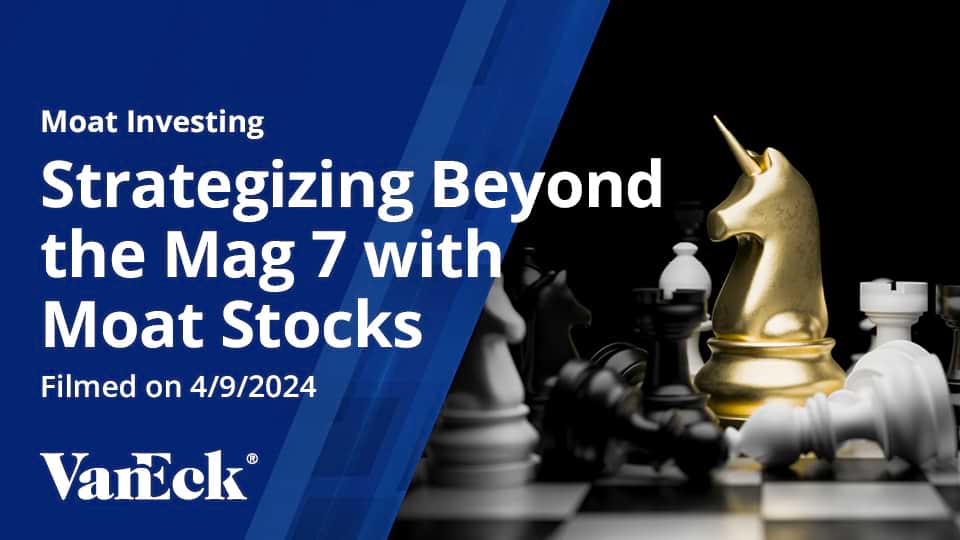Understanding Small Cap, Mid Cap & Large Cap Stocks
September 22, 2023
Read Time 10+ MIN
Small-Cap vs Mid-Cap vs Large-Cap: Market Capitalization Explained
- Introduction: What is Market Capitalization?
- Understanding Small Cap Stocks
- Exploring Mid-Cap Stocks
- Analyzing Large-Cap Stocks
- Key Differences Between Small-Cap, Mid-Cap, and Large-Cap Stocks
- Factors to Consider When Choosing Between Small-Cap, Mid-Cap, and Large-Cap Stocks
- Investing Strategies for Small-Cap, Mid-Cap, and Large-Cap Stocks
- Market Capitalization and Portfolio Diversification
- Summary and Conclusions
Introduction: What is Market Capitalization?
Market capitalization, often referred to as "market cap," is a fundamental concept in investing. Market capitalization represents the total value of a company's outstanding shares of stock in the market. Market cap is calculated by multiplying the current share price of a company by the total number of shares outstanding. This figure gives investors an indication of a company's size and relative worth in the market.
Understanding market capitalization is crucial because it helps investors classify companies into different categories based on their size. This classification provides valuable insights into a company's risk profile, growth potential, and investment returns.
Understanding Small Cap Stocks
Small-cap stocks refer to companies with a relatively small market capitalization. The definition of a small-cap stock varies across the industry, leading to differing interpretations based on market cap ranges or percentile allocations within the total market cap.
One approach to classifying small-cap stocks is to look at dollar-based market cap ranges. Companies with market capitalizations ranging from a few million dollars to a couple of billion dollars are generally considered small-cap. This definition is often influenced by the company's size relative to larger corporations and its growth potential.
However, another perspective, as exemplified by Morningstar's classification, involves percentile ranges. According to Morningstar's classification, the top 70% of the total U.S. market capitalization is categorized as large-cap, the next 20% is considered mid-cap, and the subsequent 7% falls under the small-cap category. This allocation method offers a dynamic view, considering the overall market landscape.
To further complicate matters, the remaining 3% of the market could be referred to as micro-cap stocks, representing companies with even smaller market capitalizations. These micro-cap stocks are often characterized by their potential for rapid growth but also heightened volatility.
Given these differences in defining small-cap stocks, investors should be aware of the methodology used by different financial institutions and investment platforms.
Examples of small-cap stocks include emerging tech startups and niche market players. Below are two specific examples of small-cap stocks:
Guided Software Inc. (Ticker: GWRE): Guidewire Software provides software solutions for property and casualty insurers through their flagship products: InsuranceSuite, ClaimCenter, PolicyCenter, BillingCenter, and InsuranceNow. Together these products create a modern software platform capable of disrupting an industry that has been underserved by legacy software vendors.
Cerus Corporation (Ticker: CERS): Cerus is a biomedical products company that specializes in blood safety. It focuses on providing solutions to prevent the transmission of infectious diseases through blood transfusions. As a small-cap stock, Cerus operates in a specialized niche within the healthcare sector.
Investing in small-cap stocks can offer significant advantages, such as the potential for substantial returns if the company succeeds. However, they also come with higher risk and volatility compared to larger, more established companies. Small-cap stocks can also be more sensitive to market fluctuations and economic downturns.
Exploring Mid-Cap Stocks
Mid-cap stocks fall between small-cap and large-cap stocks in terms of market capitalization. These companies are generally more established than small cap companies but may not have the same level of recognition as large-cap giants. Here are a couple of real examples of mid-cap stocks:
Zebra Technologies Corporation (Ticker: ZBRA): Zebra Technologies is a company that provides tracking and visibility solutions, including barcode printers, scanners, and RFID technology. As a mid-cap stock, Zebra has established itself as a leader in its industry and serves a wide range of sectors, including retail, healthcare, and manufacturing.
The Cooper Companies Inc. (Ticker: COO): The Cooper Companies is a global medical device company that specializes in products for contact lens wearers and women's health. With a mid-cap market capitalization, Cooper Companies has a strong presence in its niche markets and continues to innovate in its field.
Investing in mid-cap stocks can provide a balanced approach for investors seeking growth opportunities without the extreme volatility of small-cap stocks. While they offer good growth potential, mid-cap stocks may also be influenced by market shifts and economic conditions.
Analyzing Large-Cap Stocks
Large-cap stocks are well-established companies with a substantial market capitalization, often exceeding ten billion dollars. These companies are recognized globally and typically have a history of stable performance. Here are a couple of real examples of large-cap stocks:
Apple Inc. (Ticker: AAPL): Apple needs no introduction. As a large cap stock, it's one of the world's most valuable and recognizable technology companies. Apple's market capitalization reflects its massive global footprint, innovative products, and diverse revenue streams.
Johnson & Johnson (Ticker: JNJ): Johnson & Johnson is a large cap company in the healthcare sector, known for its wide range of pharmaceuticals, medical devices, and consumer health products.
Investing in large-cap stocks offers the benefit of stability and lower risk compared to smaller counterparts. However, large-cap stocks may have limited room for explosive growth compared to smaller companies. They are often considered core holdings in long-term investment portfolios.
Key Differences Between Small-Cap, Mid-Cap, and Large-Cap Stocks
Each category of stocks comes with its own market capitalization thresholds, risk and volatility levels, and growth potential:
Market Capitalization Thresholds
The classification of stocks into small-, mid- and large-cap categories is primarily determined by their market capitalization. Small-cap stocks typically fall within a market capitalization range of a few million to a couple of billion dollars. Mid-cap stocks encompass a broader scope, ranging from a few billion to around ten billion dollars. Large-cap stocks extend beyond ten billion dollars in market capitalization. These thresholds provide a basis for understanding the scale and scope of companies within each category.
Risk and Volatility Levels
Small-cap stocks are often associated with heightened risk and volatility due to their relatively smaller size and sensitivity to market shifts. The potential for rapid growth is counterbalanced by increased susceptibility to market fluctuations. Mid-cap stocks present a middle ground, offering growth potential while possessing a level of stability that is intermediate between small and large-cap stocks. Large-cap stocks are renowned for their stability and lower risk compared to smaller counterparts. Their well-established presence and diversified operations contribute to a more predictable performance trajectory.
Growth Potential and Investment Returns
Small-cap stocks frequently exhibit significant growth potential as they operate in dynamic sectors with ample room for expansion and innovation. However, this growth potential is accompanied by greater uncertainty and potential downside. Mid-cap stocks offer a compromise between growth and stability, appealing to investors seeking opportunities without extreme volatility. Large-cap stocks, while providing stability and a potential source of dividends, may offer comparatively slower growth due to their size and market maturity.
Factors to Consider When Choosing Between Small-Cap, Mid-Cap, and Large-Cap Stocks
The decision to invest in small-cap, mid-cap, or large-cap stocks hinges on an investor's risk tolerance, investment objectives, and time horizon. Investors seeking aggressive growth may be drawn to small-cap stocks, acknowledging the higher level of risk involved. Those seeking a balanced approach might opt for mid cap stocks, while investors prioritizing stability and reliability could lean towards large cap stocks. By aligning investment choices with individual preferences, investors can construct diversified portfolios that reflect their financial goals and risk appetite.
Investing Strategies for Small-Cap, Mid-Cap, and Large-Cap Stocks
When delving into the realm of small cap, mid cap, and large cap stocks, investors have a spectrum of strategies at their disposal. These strategies cater to different investment philosophies and risk appetites, allowing investors to align their approaches with their financial goals.
Value Investing
Value investing is a timeless strategy that transcends market capitalization categories. For small-cap stocks, value investing involves seeking out companies that are trading below their intrinsic value, often due to market pessimism or temporary setbacks. Investors employing this strategy look for opportunities to buy undervalued stocks, with the expectation that their true worth will eventually be recognized by the market. In mid-cap and large-cap categories, value investors similarly seek companies with strong fundamentals and sound financials that might be currently underappreciated.
Growth Investing
Growth investing revolves around identifying companies poised for significant expansion and capitalizing on their potential for rapid growth. In the context of small-cap stocks, growth investors focus on emerging companies in niche markets that have the capacity to disrupt industries. For mid-cap stocks, they target companies with proven track records of consistent growth. Even among large-cap stocks, growth investors seek corporations that demonstrate the ability to maintain above-average growth rates. This strategy entails accepting higher risk in exchange for the potential for substantial returns.
Blend Investing
Blend investing, often referred to as a "core and satellite" approach, combines elements of both value and growth investing. This strategy involves maintaining a diversified core portfolio of well-established, large-cap companies for stability, while allocating a portion of the portfolio to small- and mid-cap stocks for growth potential. The idea is to strike a balance between stability and higher risk-reward opportunities. Blend investors seek to capture the benefits of both value and growth strategies while managing overall portfolio risk.
Choosing the Right Strategy
The choice of strategy depends on an investor's risk tolerance, time horizon, and investment objectives. Investors with a higher appetite for risk and a longer investment horizon might be drawn to growth or blend strategies, as they aim for substantial returns over the long term. On the other hand, those seeking a more conservative approach could opt for value or blend strategies to mitigate potential volatility. Each strategy offers its own advantages and challenges, making it important for investors to conduct thorough research and consultation before implementing a specific approach.
Market Capitalization and Portfolio Diversification
Diversification is often hailed as one of the most effective tools in an investor's toolkit, and market capitalization serves as a crucial component of this diversification strategy. The concept behind diversification is simple: by spreading investments across different asset classes, industries, and market capitalization categories, investors can reduce risk and optimize their potential for returns. Market capitalization diversification, specifically, involves investing in a variety of small-cap, mid-cap, and large-cap stocks to strike a balance between growth potential and stability.
Risk Mitigation through Diversification
Investing solely in one market cap category exposes a portfolio to a higher degree of risk. Small-cap stocks, for instance, can experience heightened volatility due to their sensitivity to market shifts. However, by diversifying across various market capitalization tiers, investors can mitigate the impact of the volatility in one category with the stability of another. While small-cap stocks might introduce a level of risk, the presence of mid- and large-cap stocks helps to counterbalance that risk, providing a more consistent performance trajectory.
Enhanced Return Potential
Market capitalization diversification doesn't just aim to reduce risk—it also aims to enhance potential returns. Small-cap stocks often offer high growth potential, but their volatility can be a double-edged sword. By combining them with mid and large-cap stocks, investors can achieve a blend of growth and stability. Mid-cap stocks, in particular, can offer the advantage of growth while presenting a less erratic performance pattern than small-caps. Large-cap stocks contribute to portfolio stability and can also provide dividends, adding another layer of potential returns.
Customizing for Individual Goals
A well-balanced portfolio is not a one-size-fits-all concept. Investors have unique risk tolerances, investment horizons, and financial objectives. Market capitalization diversification allows for customization based on these individual factors. For instance, aggressive investors seeking rapid growth might allocate a larger portion to small-cap and mid-cap stocks, while more conservative investors might emphasize larger, well-established companies. By adjusting the allocation across market caps, investors can tailor their portfolios to their comfort levels and goals.
Monitoring and Rebalancing
It's important to note that portfolio diversification is not a one-time task. As market conditions, economic trends, and personal circumstances evolve, the balance of market cap allocations may shift. Regular monitoring and periodic rebalancing ensure that the portfolio remains aligned with an investor's objectives and risk tolerance. This process involves selling some assets that have appreciated and investing in others to maintain the desired diversification levels.
Summary and Conclusions
Market capitalization, a fundamental investing concept, is the total value of a company's outstanding shares and is calculated by multiplying the current share price by the total number of shares outstanding. This measurement assists in categorizing companies based on their size, thus influencing risk, growth potential, and investment returns.
Differentiating small-cap, mid-cap, and large-cap stocks is essential. Small-cap stocks have a market capitalization of a few million to a couple of billion dollars, often offering high growth potential coupled with higher risk. Mid-cap stocks, ranging from a few billion to around ten billion dollars, provide a balanced mix of growth and stability. Large-cap stocks, exceeding ten billion dollars, are renowned for their stability and lower risk, though with potentially slower growth. The choice between these categories depends on investors' risk tolerance, time horizon, and objectives.
Investment strategies vary across market caps. Value investing seeks undervalued stocks, growth investing targets high-growth companies, and blend investing combines both approaches. Diversifying across market capitalizations reduces risk and enhances potential returns. A well-balanced portfolio should include a mix of small-cap, mid-cap, and large-cap stocks based on individual risk appetite and goals. Regular monitoring and rebalancing ensure the portfolio remains aligned with changing market conditions and personal circumstances, reflecting the essence of effective portfolio management.
Many investors seeking smaller cap exposure look to a small- and mid-cap strategy, or “SMID” cap strategy which combines the two market cap exposures into one strategy that can serve as a compliment or completion portfolio in combination with their large cap exposure. Morningstar applies its time-tested economic moat and valuation equity research framework to assemble a portfolio of quality SMID cap stocks that are trading at attractive valuations. This approach takes the guesswork out of investing in SMID cap companies and take the form of the Morningstar U.S. Small-Mid Cap Moat Focus Index.
VanEck Morningstar SMID Moat ETF (SMOT) seeks to track as closely as possible, before fees and expenses, the price and yield performance of the Morningstar US Small-Mid Cap Moat Focus Index.
To receive more Moat Investing insights, sign up in our subscription center.
Related Topics
Related Insights
April 10, 2024
Important Disclosures
Zebra Technologies Corp is .63 of SMOT net assets as of 9/19/23.
This is not an offer to buy or sell, or a recommendation to buy or sell any of the securities, financial instruments or digital assets mentioned herein. The information presented does not involve the rendering of personalized investment, financial, legal, tax advice, or any call to action. Certain statements contained herein may constitute projections, forecasts and other forward-looking statements, which do not reflect actual results, are for illustrative purposes only, are valid as of the date of this communication, and are subject to change without notice. Actual future performance of any assets or industries mentioned are unknown. Information provided by third party sources are believed to be reliable and have not been independently verified for accuracy or completeness and cannot be guaranteed. VanEck does not guarantee the accuracy of third party data. The information herein represents the opinion of the author(s), but not necessarily those of VanEck or its other employees.
An investor cannot invest directly in an index. Returns reflect past performance and do not guarantee future results. Results reflect the reinvestment of dividends and capital gains, if any. Certain indices may take into account withholding taxes. Index returns do not represent Fund returns. The Index does not charge management fees or brokerage expenses, nor does the Index lend securities, and no revenues from securities lending were added to the performance shown.
The Morningstar® US Small-Mid Cap Moat Focus IndexSM was created and is maintained by Morningstar, Inc. Morningstar, Inc. does not sponsor, endorse, issue, sell, or promote the VanEck Morningstar SMID Moat ETF and bears no liability with respect to the ETF or any security. Morningstar® is a registered trademark of Morningstar, Inc. Morningstar® US Small-Mid Cap Moat Focus IndexSM is a service mark of Morningstar, Inc.
The Morningstar moat-driven indexes represent various regional exposures and consist of companies identified as having sustainable, competitive advantages and whose stocks are attractively priced, according to Morningstar.
The Morningstar® US Small-Mid Cap Moat Focus IndexSM is intended to track the overall performance of small- and mid-cap companies with sustainable competitive advantages and attractive valuations according to Morningstar's equity research team.
An investment in the VanEck Morningstar SMID Moat ETF (SMOT) may be subject to risks which include, among others, risks related to investing in equity securities, small- and medium-capitalization companies, consumer discretionary sector, financials sector, health care sector, industrials sector, information technology sector, market, operational, high portfolio turnover, index tracking, authorized participant concentration, new fund, no guarantee of active trading market, trading issues, passive management, fund shares trading, premium/discount and liquidity of fund shares, non-diversified, and index-related concentration risks, all of which may adversely affect the Fund. Small- and medium-capitalization companies may be subject to elevated risks.
Investing involves substantial risk and high volatility, including possible loss of principal. An investor should consider the investment objective, risks, charges and expenses of a Fund carefully before investing. To obtain a prospectus and summary prospectus, which contain this and other information, call 800.826.2333 or visit vaneck.com. Please read the prospectus and summary prospectus carefully before investing.
© Van Eck Securities Corporation, Distributor, a wholly owned subsidiary of Van Eck Associates Corporation.
Related Funds
Important Disclosures
Zebra Technologies Corp is .63 of SMOT net assets as of 9/19/23.
This is not an offer to buy or sell, or a recommendation to buy or sell any of the securities, financial instruments or digital assets mentioned herein. The information presented does not involve the rendering of personalized investment, financial, legal, tax advice, or any call to action. Certain statements contained herein may constitute projections, forecasts and other forward-looking statements, which do not reflect actual results, are for illustrative purposes only, are valid as of the date of this communication, and are subject to change without notice. Actual future performance of any assets or industries mentioned are unknown. Information provided by third party sources are believed to be reliable and have not been independently verified for accuracy or completeness and cannot be guaranteed. VanEck does not guarantee the accuracy of third party data. The information herein represents the opinion of the author(s), but not necessarily those of VanEck or its other employees.
An investor cannot invest directly in an index. Returns reflect past performance and do not guarantee future results. Results reflect the reinvestment of dividends and capital gains, if any. Certain indices may take into account withholding taxes. Index returns do not represent Fund returns. The Index does not charge management fees or brokerage expenses, nor does the Index lend securities, and no revenues from securities lending were added to the performance shown.
The Morningstar® US Small-Mid Cap Moat Focus IndexSM was created and is maintained by Morningstar, Inc. Morningstar, Inc. does not sponsor, endorse, issue, sell, or promote the VanEck Morningstar SMID Moat ETF and bears no liability with respect to the ETF or any security. Morningstar® is a registered trademark of Morningstar, Inc. Morningstar® US Small-Mid Cap Moat Focus IndexSM is a service mark of Morningstar, Inc.
The Morningstar moat-driven indexes represent various regional exposures and consist of companies identified as having sustainable, competitive advantages and whose stocks are attractively priced, according to Morningstar.
The Morningstar® US Small-Mid Cap Moat Focus IndexSM is intended to track the overall performance of small- and mid-cap companies with sustainable competitive advantages and attractive valuations according to Morningstar's equity research team.
An investment in the VanEck Morningstar SMID Moat ETF (SMOT) may be subject to risks which include, among others, risks related to investing in equity securities, small- and medium-capitalization companies, consumer discretionary sector, financials sector, health care sector, industrials sector, information technology sector, market, operational, high portfolio turnover, index tracking, authorized participant concentration, new fund, no guarantee of active trading market, trading issues, passive management, fund shares trading, premium/discount and liquidity of fund shares, non-diversified, and index-related concentration risks, all of which may adversely affect the Fund. Small- and medium-capitalization companies may be subject to elevated risks.
Investing involves substantial risk and high volatility, including possible loss of principal. An investor should consider the investment objective, risks, charges and expenses of a Fund carefully before investing. To obtain a prospectus and summary prospectus, which contain this and other information, call 800.826.2333 or visit vaneck.com. Please read the prospectus and summary prospectus carefully before investing.
© Van Eck Securities Corporation, Distributor, a wholly owned subsidiary of Van Eck Associates Corporation.



